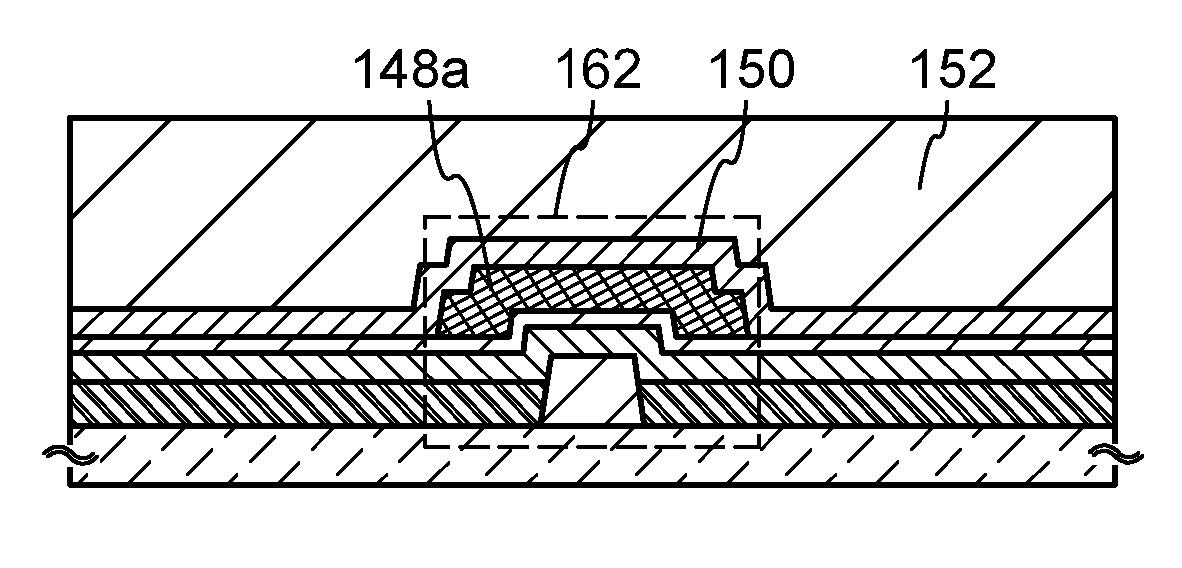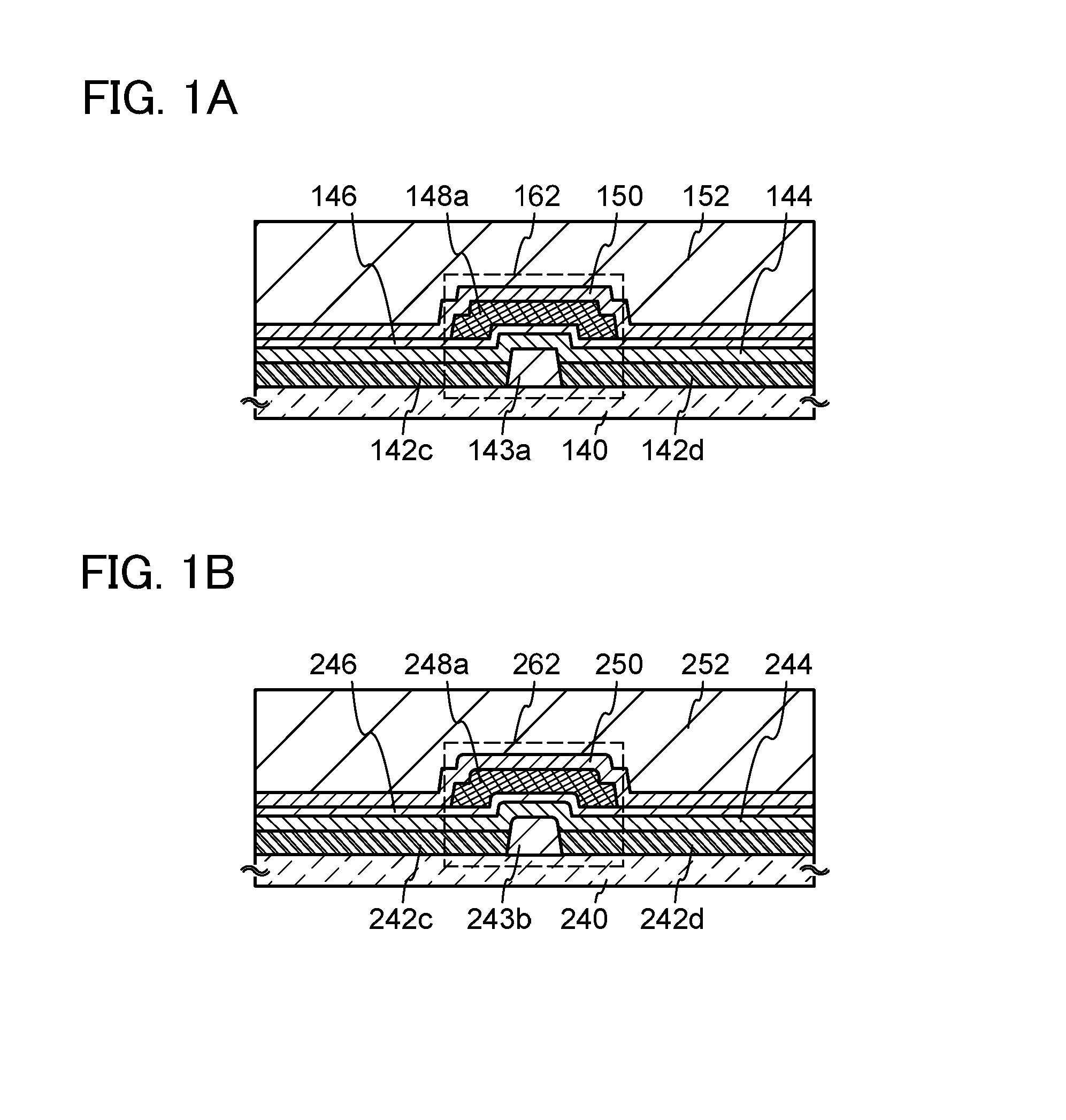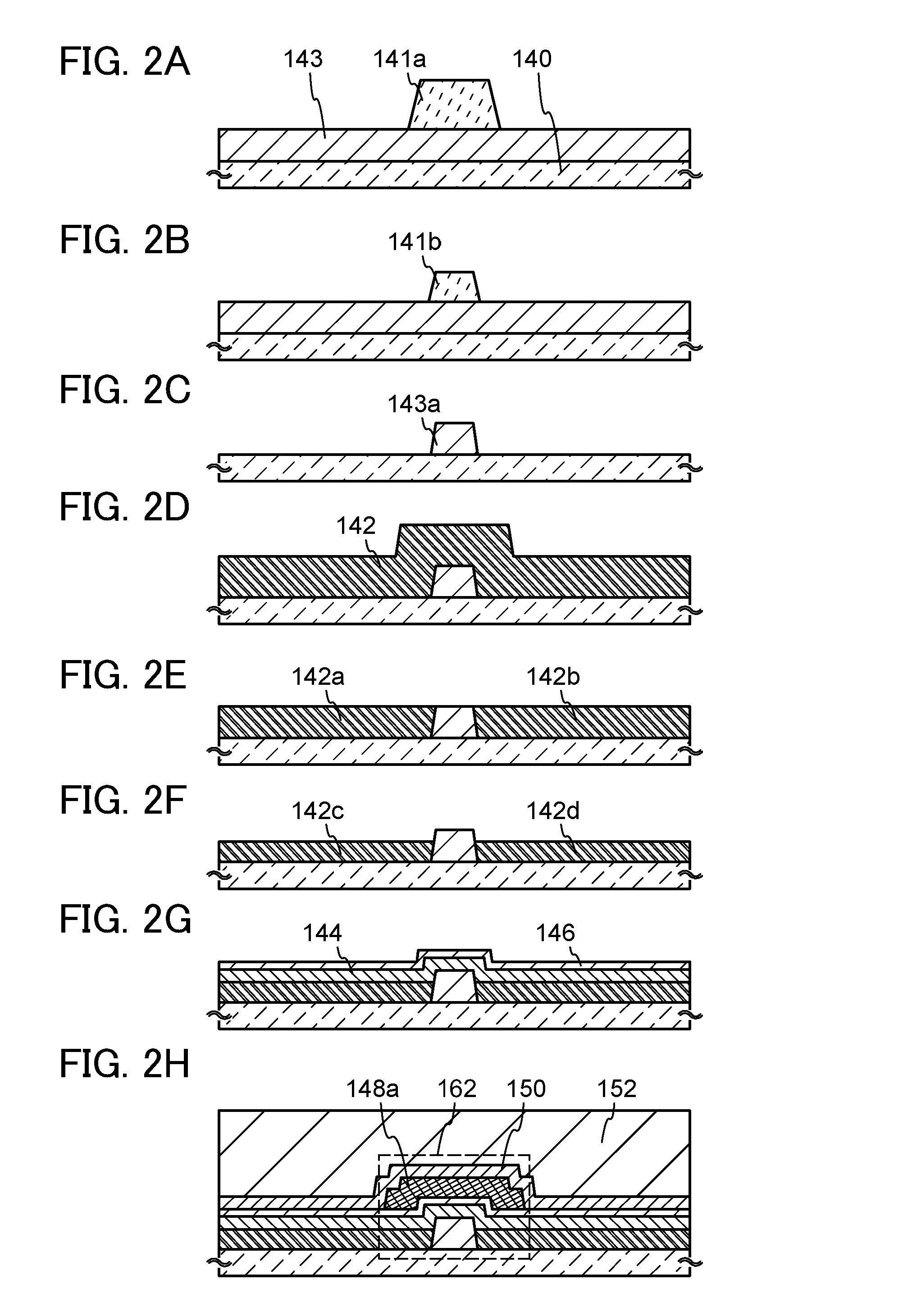Manufacturing method of semiconductor device
a manufacturing method and semiconductor technology, applied in semiconductor devices, instruments, electrical devices, etc., can solve the problems of poor semiconductor film coverage, major defect generation in manufacturing process, and difficulty in achieving sufficient miniaturization at submicron level, so as to achieve the effect of suppressing defects and maintaining favorable characteristics
- Summary
- Abstract
- Description
- Claims
- Application Information
AI Technical Summary
Benefits of technology
Problems solved by technology
Method used
Image
Examples
embodiment 1
(Embodiment 1)
[0075]In this embodiment, a structure and a manufacturing method of a semiconductor device according to an embodiment of the invention disclosed herein will be described with reference to FIGS. 1A and 1B and FIGS. 2A to 2H.
[0076]FIGS. 1A and 1B illustrate examples of the structure of a semiconductor device. FIG. 1A illustrates a first example of the structure, and FIG. 1B illustrates a second example of the structure.
[0077]A transistor 162 in FIG. 1A includes an insulating film 143a over a substrate 140 having a surface over which components are formed, a source electrode 142c and a drain electrode 142d having a smaller thickness than the insulating film 143a, an oxide semiconductor film 144 in contact with a part of a surface of the insulating film 143a, a part of a surface of the source electrode 142c, and a part of a surface of the drain electrode 142d, a gate insulating film 146 covering the oxide semiconductor film 144, and a gate electrode 148a over the gate insu...
embodiment 2
(Embodiment 2)
[0159]In this embodiment, a structure and a manufacturing method of a semiconductor device according to another embodiment of the invention disclosed herein will be described with reference to FIGS. 3A to 3C, FIGS. 4A to 4D, and FIGS. 5A to 5C
[0160]FIGS. 3A to 3C illustrate an example of a structure of a semiconductor device. FIG. 3A is a cross-sectional view of the semiconductor device; FIG. 3B is a plan view of the semiconductor device; and FIG. 3C illustrates a circuit configuration of the semiconductor device. Note that a structure of the semiconductor device is mainly described in this embodiment, and operation of the semiconductor device will be described in detail in the following embodiment. Note that the semiconductor device illustrated in FIGS. 3A to 3C is just an example of a semiconductor device having a predetermined function and does not exhaustively represent the semiconductor device of the invention disclosed herein. The semiconductor device according t...
embodiment 3
(Embodiment 3)
[0192]In this embodiment, an example of application of a semiconductor device according to one embodiment of the invention disclosed herein will be described with reference to FIGS. 6A-1, 6A-2, and 6B. Here, an example of a memory device will be described. Note that in some circuit diagrams, “OS” is written beside a transistor in order to indicate that the transistor includes an oxide semiconductor.
[0193]In a semiconductor device which can be used as a memory device, which is illustrated in FIG. 6A1, a first wiring (1st Line) is electrically connected to a source electrode (or a drain electrode) of a transistor 1000. A second wiring (2nd Line) is electrically connected to a drain electrode (or a source electrode) of the transistor 1000. A third wiring (3rd Line) is electrically connected to a source electrode (or a drain electrode) of a transistor 1010. A fourth wiring (4th Line) is electrically connected to a gate electrode of the transistor 1010. Furthermore, a gate ...
PUM
 Login to View More
Login to View More Abstract
Description
Claims
Application Information
 Login to View More
Login to View More - R&D
- Intellectual Property
- Life Sciences
- Materials
- Tech Scout
- Unparalleled Data Quality
- Higher Quality Content
- 60% Fewer Hallucinations
Browse by: Latest US Patents, China's latest patents, Technical Efficacy Thesaurus, Application Domain, Technology Topic, Popular Technical Reports.
© 2025 PatSnap. All rights reserved.Legal|Privacy policy|Modern Slavery Act Transparency Statement|Sitemap|About US| Contact US: help@patsnap.com



